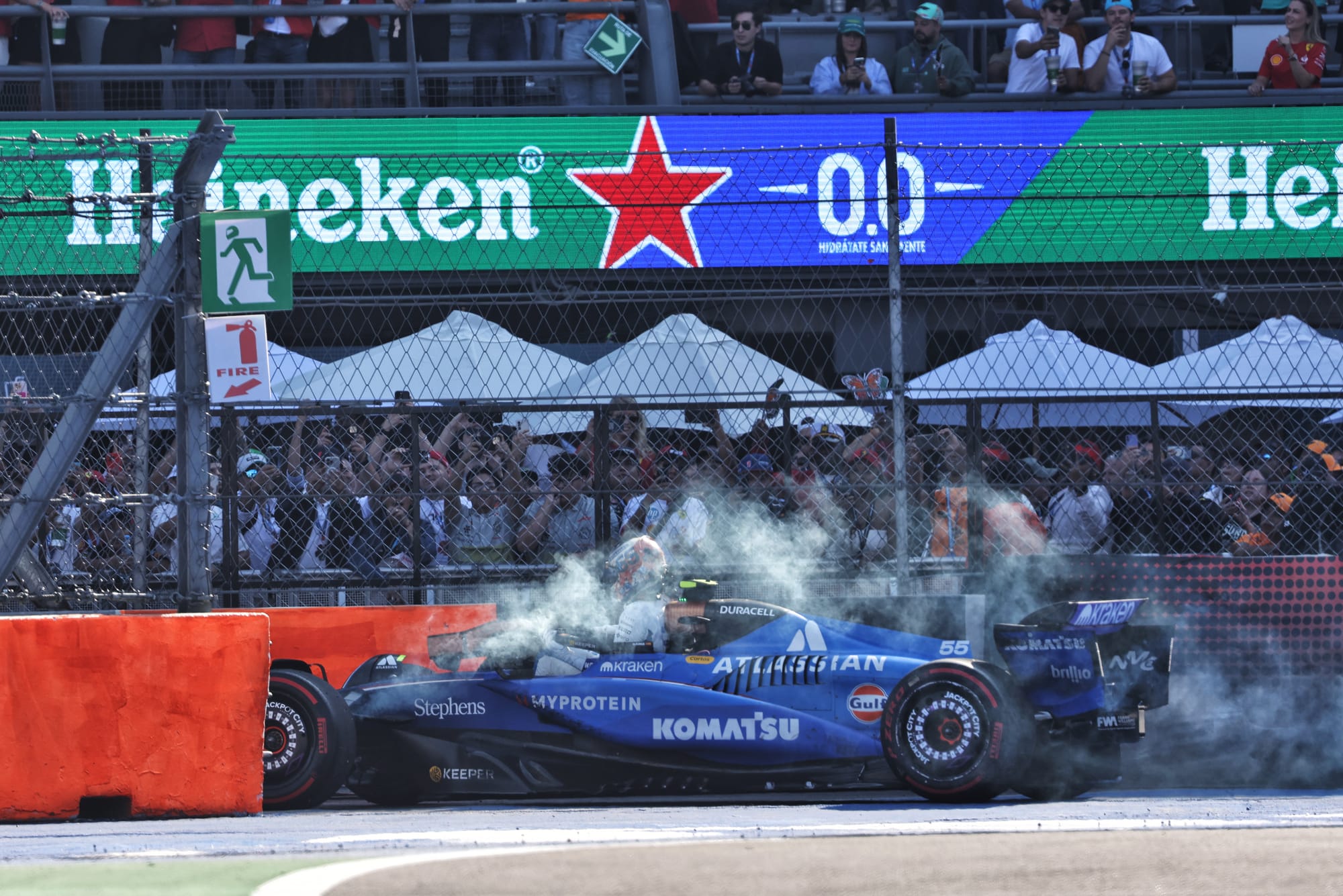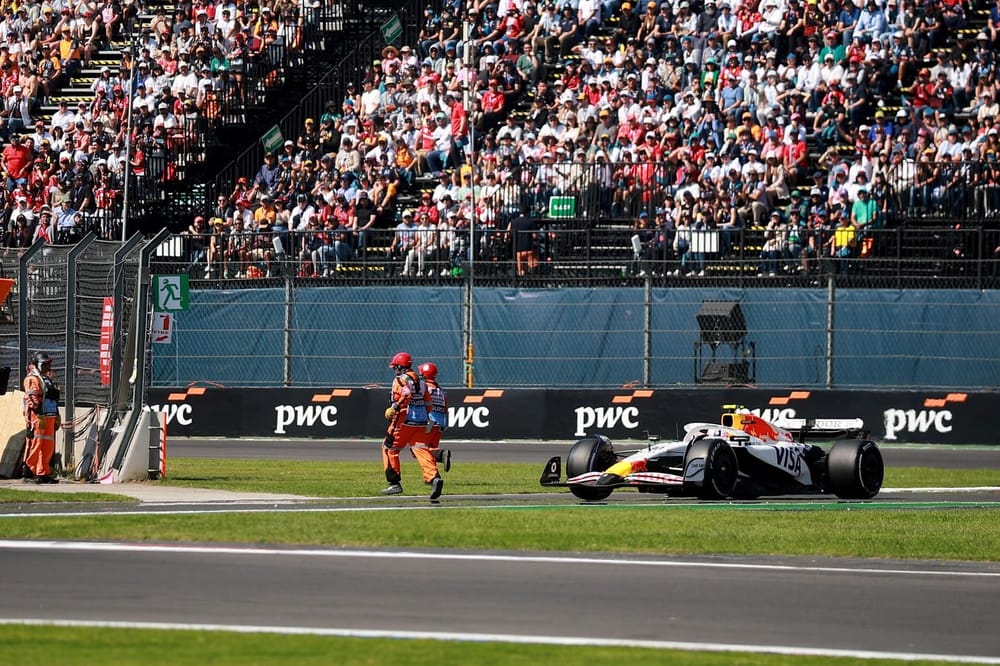The FIA has offered its explanation for two major Mexican Grand Prix talking points - one involving Liam Lawson's near-miss with track marshals, and the other surrounding the late virtual safety car decision to allow Carlos Sainz's Williams to be recovered.
The first incident took place early on when Racing Bulls driver Lawson encountered two track marshals running across the circuit between Turns 1 and 2 at the start of the third lap.
Having just returned to the track from the pits, a furious Lawson was totally blindsided by what happened and instantly came on his team radio to say: "Did you see that? Oh my god dude, I could have f***ing killed them."
He later told the media that the situation was "unacceptable".
An FIA spokesperson explained that the marshals had been put on standby to retrieve debris on the track, but that it still did not have a clear answer as to why two of them were on track.
"Following a Turn 1 incident, race control was informed that debris was present on the track at the apex of that corner," a spokesperson said.
"On lap three, marshals were alerted and placed on standby to enter the track and recover the debris once all cars had passed Turn 1.
"As soon as it became apparent that Lawson had pitted, the instructions to dispatch marshals were rescinded, and a double yellow flag was shown in that area. We are still investigating what occurred after that point."
The Race understands that FIA officials have talked to Lawson and apologised to him.
The FIA added its support for the efforts made by volunteer marshals.
"We would like to underline our respect and appreciation for the local ASN, OMDAI [Mexico's organising body], as well as the Autodromo Hermanos Rodriguez and their marshals, who are volunteers and play a vital role in the safe and successful running of our sport," said the spokesperson.
"Their professionalism and dedication are invaluable to every event we stage."
The late VSC call

The second talking point came in the closing stages when Sainz spun in the stadium section on the penultimate lap.
Realising he was unable to continue, Sainz drove his Williams towards a gap in the barriers to make sure he was clear of the track.
Despite Sainz appearing to be out of the way, however, race control brought out a VSC.
That call, which for example prevented Max Verstappen having one final chance to pass Charles Leclerc for second along the main straight, triggered some debate among fans who felt that the VSC was unnecessary.
However, the FIA's explanation indicated that the recovery of Sainz's car was more complicated than it looked on TV.
The FIA spokesperson said: "[Sainz's] car came to a halt in an exposed position. The car subsequently began smoking and race control received notifications of fire, making it clear that marshal intervention would be required for recovery.
"As is standard procedure when marshals are deployed to recover a car, the race is neutralised, in this case, a virtual safety car [VSC] was triggered until the car was moved to a safe location behind the barriers.
"The VSC ended as soon as the car was in a protected position, and the race concluded under green-flag conditions."
Verstappen was denied an opportunity to gain more points that could bolster his title challenge as a result of that decision but did not seem too fussed.
Asked if he was frustrated by the VSC, Verstappen said: "No, not really. Sometimes the safety car has been very nice to me as well in my career.
"Sometimes you win, sometimes you lose. It's how it goes in racing."



